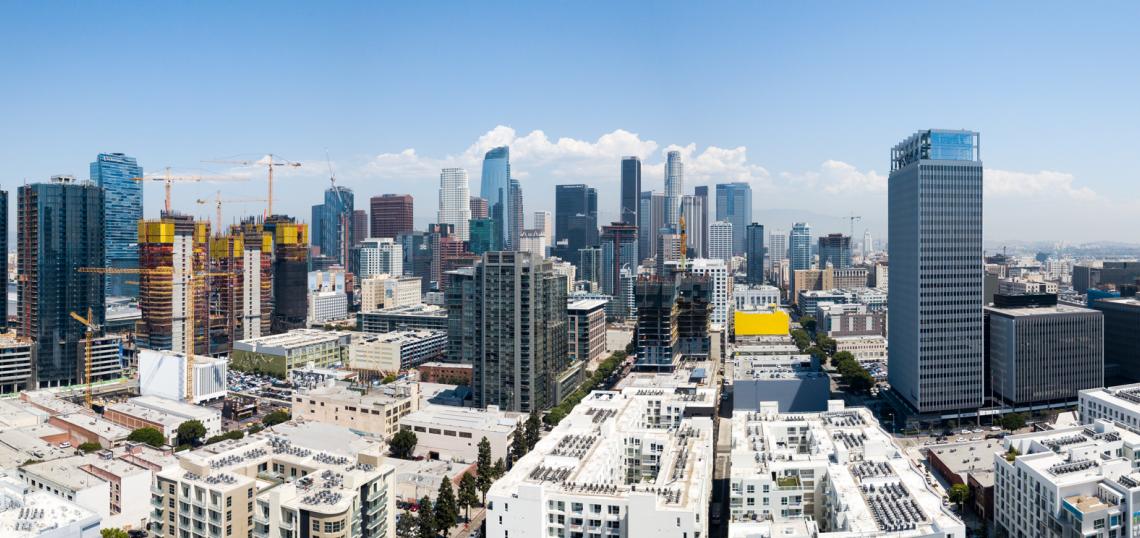KPCC recently reported that the apartment vacancy rate in Downtown Los Angeles is currently 12 percent, its highest point in the last 17 years. This statistic was inevitably seized upon by both pro-growth and anti-growth advocates as evidence for their respective causes. The proprietary data, which comes from the CoStar Group, is likely accurate but needs to be viewed in context. Historically, high vacancy rates in Los Angeles apartments remain localized around neighborhoods experiencing construction booms, and are fleeting at best.
While a dearth of supply continues to send rents skyrocketing across Southern California, Downtown remains the lone exception to this alarming trend. The Central City in the midst of its largest construction boom since the 1920s. In the last six months alone, the neighborhood has seen a half-dozen large buildings open, bringing more than 2,000 residential units to market. As a result, landlords in Downtown have found themselves in the uncommon position of having to woo prospective tenants. KPCC highlighted the practice of new buildings from City West to South Park offering incentives such as complimentary parking and up to six weeks of free rent.
According to a 2014 survey by the National Association of Homebuilders, the average new apartment building will take just under one year to "stabilize” and reach at least 90 percent occupancy. But in the case of Downtown, we have a half-dozen buildings opening at a similar location, at a similar time, offering similar rents, similar amenities and targeting a similar segment of the population. In Los Angeles, with its longtime housing deficit, this type of competition between landlords is exceedingly rare, as there have only been a handful of occasions where this many apartments have been built in a single neighborhood in such a short period of time.
Nonetheless, there is historical precedent for this very situation, even in Downtown. One need only look back 10 years to the flood of adaptive reuse projects that transformed dozens of long-vacant buildings on Spring Street into apartments and condos. That previous building boom - which peaked just as global economy fell into recession - also resulted in an overabundance of new residential units, which in turn led to discounted rents for aspiring loft dwellers. Yet by 2012, the surfeit of apartments and condos had dissipated, and some building owners were touting occupancy rates near 100 percent.
An even more daunting apartment glut came to the San Fernando Valley in the early-to-mid 1960s, when the widespread construction of "dingbat" apartment complexes resulted in vacancy rates between 25 and 50 percent. In 1965, the L.A. Times wrote that many lenders had cut off funding for new projects and that any tightening of the rental market was at least two years away. Just one year later, the vacancy rate had declined to a more manageable 12 percent. By 1969, the Times reported that the Valley’s apartment vacancy rate was now just two percent, and rents were on the rise.
Rather than being some sort of cautionary tale about the dangers of new development, Downtown’s apartment glut is simply another example of the intersection between supply and demand. If the buildings from two years ago were not filled today, there would not be new construction making up the majority of vacant housing in Downtown. If history is any indicator, these new buildings will soon be filled, and the cranes dotting the skyline today will be the vacancies of tomorrow.
Thank you to Mark Vallianatos of LAplus and Josh Albrektson, M.D. for their assistance with this article.






